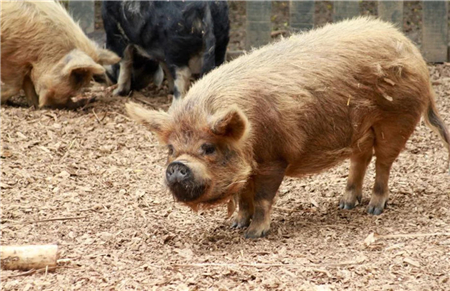Do you know the feed nutrition of early care for pigs?
The main task of the nursing house is to make the weaning piglets transition smoothly during the weaning period, develop good behavior norms (fixed-point feeding, fixed-point sleep and fixed-point excretion) and maintain an ideal growth rate. Nutrition and feeding are particularly important to get through the weaning period smoothly.
Due to weaning, weaning piglets lost their mother's shelter and food rations, coupled with separate columns, herding and other behavioral interference, weaning piglets are in a state of turbulent stress. And when the piglets were weaned at 4 weeks old, the digestive system was not well developed, and it took a period of time to adjust and adapt after weaning. The stress during weaning period greatly hinders the development of digestion and absorption system, so good nutritional care is very important.
The following are mainly described from five aspects of early nutritional care of piglets.
Food induction and intestinal development
The purpose of early supplementary feeding for suckling piglets is to adapt to the feed environment as soon as possible after weaning, to be familiar with the shape and taste of feed, and to increase feed intake after weaning.

The stomach of piglets begins to produce a small amount of hydrochloric acid and digestive enzymes at about 14 days old, so about 2 weeks after birth, the piglets can use a disc feed trough and add a small amount of opening material to slowly learn to feed from play.
Once you eat the opening material, the acids and enzymes produced in the stomach increase rapidly, speeding up the decomposition and absorption of the feed, while there is acid in the stomach, harmful bacteria will not multiply in large numbers.
If the piglets quickly adapt to weaning and feed, and the food in the stomach accelerates the secretion of new digestive juice, the weaned pigs will digest the food normally, absorb nutrients and adapt to the environment of the nursery.
Second, group effect
Pigs live in groups, are accustomed to the centralized feeding of sows, like to compete, and often imitate the behavior of pigs in the same column, including feeding, sleeping and excretion.
Therefore, when pigs arrive at the nursery, they have to create conditions so that they can feed at the same time. When they hear or see other pigs arch their feed out of the trough, they will be tempted to increase their feed intake.
III. Feeding frequency and form
After birth, the sow will ask the piglet to suck about every hour, and once weaned, the piglet will leave the sow and live on its own, looking for feed and water, so it is necessary to train as soon as possible. In the initial stage, we should also simulate the habit of lactation, feed every 1 hour (and then gradually increase the interval), and knock on the trough to form a conditioned reflex and develop good behavior habits.
4. Feed freshness
Because piglets have just been weaned, feed should follow the principle of a small number of times to ensure that pigs can feed at any time and put an end to waste at the same time.
If a large amount of feed is fed in the trough at one time, the saliva from the mouth of the piglets will cause caking and mildew of the feed, affect the freshness of the feed and cause intestinal diseases of the piglets.
- Prev

Learn these three methods of feeding and management of pigs in spring, so that your pig farm will no longer get sick!
Learn these three methods of feeding and management of pigs in spring, so that your pig farm will no longer get sick!
- Next

What are the common feeds that are easy to poison pigs? (2)
What are the common feeds that are easy to poison pigs? (2)
Related
- On the eggshell is a badge full of pride. British Poultry Egg Market and Consumer observation
- British study: 72% of Britons are willing to buy native eggs raised by insects
- Guidelines for friendly egg production revised the increase of space in chicken sheds can not be forced to change feathers and lay eggs.
- Risk of delay in customs clearance Australia suspends lobster exports to China
- Pig semen-the Vector of virus Transmission (4)
- Pig semen-the Vector of virus Transmission (3)
- Five common causes of difficult control of classical swine fever in clinic and their countermeasures
- Foot-and-mouth disease is the most effective way to prevent it!
- PED is the number one killer of piglets and has to be guarded against in autumn and winter.
- What is "yellow fat pig"? Have you ever heard the pig collector talk about "yellow fat pig"?

